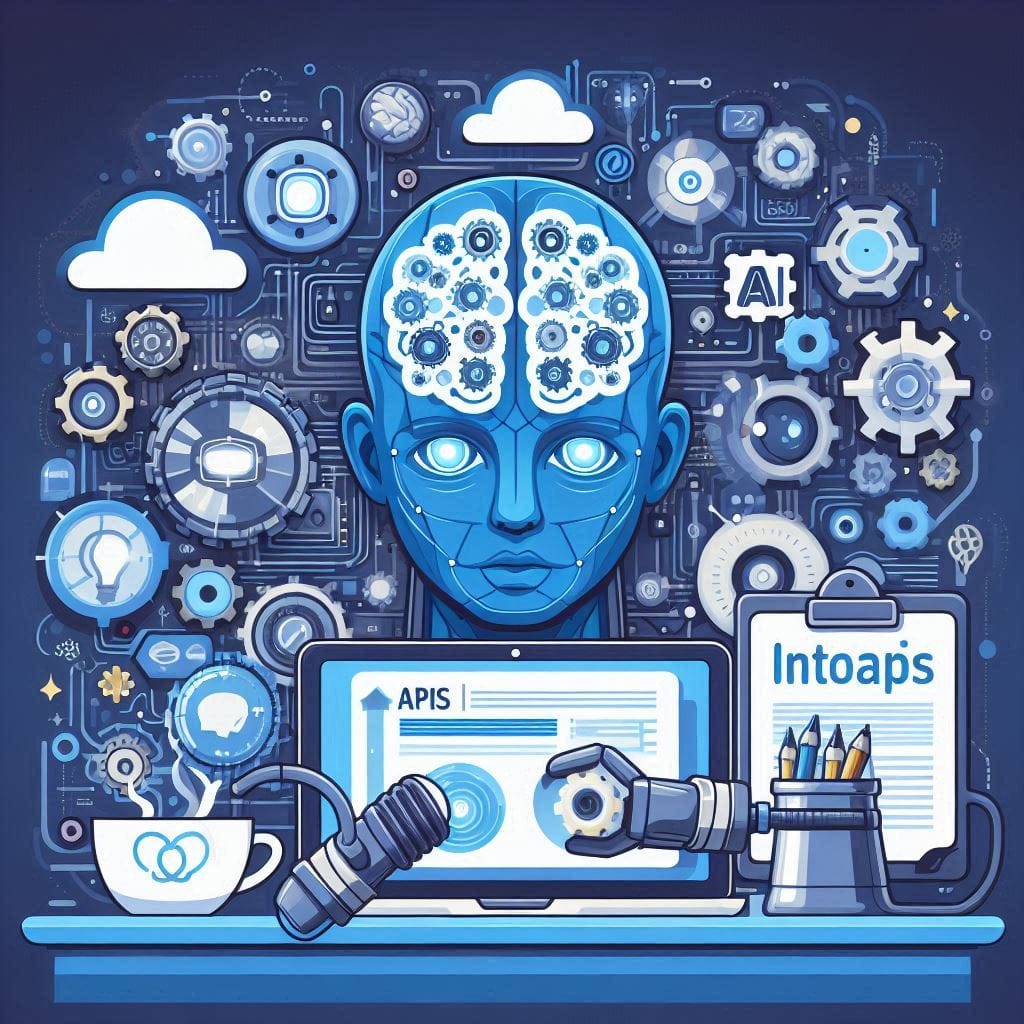
Integrating APIs for AI Solutions: Your Step-by-Step Guide
Integrating APIs (Application Programming Interfaces) is a crucial skill for building sophisticated AI solutions. APIs allow you to connect different software tools and services to create powerful automated workflows. Here’s how to approach API integration for AI solutions:
Understanding APIs
APIs are the building blocks of automation, enabling different software applications to communicate and share data. By mastering APIs, you can connect various tools to create powerful automated workflows. Understanding how APIs work and how to implement them is essential for getting the most out of your AI systems.
Key Steps for API Integration
- Identify Necessary APIs: Determine which tools and services need to be connected for your specific AI solution. For example, if you’re building a chatbot that needs access to a product database, you’ll need to connect the chatbot platform (like Voiceflow) to the database’s API.
- API Authentication: You will need to authenticate with the API using a key or other authentication mechanism. This is crucial to ensure secure access to the data.
- Data Transformation: APIs often return data in different formats, so you’ll need to transform the data to be compatible with your AI system.
- API Calls: Use the specific API calls that allow you to request and receive the data and functionality that you need. You can use tools like Postman to make these calls.
- Error Handling: Implement error handling to gracefully manage situations where the API call fails.
- Testing: Thoroughly test your API integration to ensure it’s working correctly and that all data is flowing as expected.
Tools and Platforms
- Make.com (formerly Integromat): This is a platform that allows you to create custom AI tools and connect them to other platforms. It is a valuable tool for API integrations.
- Zapier: This is a no-code platform that can connect APIs. You can build automations, chatbots, and data management systems on Zapier to create value with AI.
- Relevance AI: This platform is great for connecting AI tools, and connecting them to GPTs and AI agents.
- Voiceflow: This is a platform that can be integrated with APIs to create AI voice and chat solutions. You can use platforms like Streamline Connector to integrate Voiceflow with Shopify. You can also use Flowbridge to integrate Voiceflow with WhatsApp, Instagram, and Facebook Messenger.
- Agentive: This platform allows you to build custom AI agents and can integrate with APIs.
- Postman: You can use this tool to test your API connections and calls.

Examples of API Integration in AI Solutions
- Connecting Chatbots to Shopify: A platform like Streamline Connector can bridge Shopify and Voiceflow to enable seamless AI interactions, syncing real-time product data, order statuses, and store policies directly with Voiceflow.
- Integrating AI Agents with WhatsApp: Tools like Flowbridge allow you to integrate custom functions into Voiceflow to interact with the OpenAI Vision API and process image and voice inputs within a WhatsApp chat bot.
- Using APIs to Query AI Agents: You can use Relevance AI to create a tool that queries multiple AI agents using their API and then aggregates their responses.
- Connecting AI to Email Systems: APIs can be used to classify emails, using a prompt, and integrate that with a platform like Make.com.
Best Practices
- Start Simple: If you’re new to API integration, start with simple integrations and then build up from there.
- Focus on Value: Always make sure that the API integration is adding value to your AI solution and for your clients.
- Use No-Code and Low-Code Tools: You can use tools like Zapier, Make.com, and Relevance AI to simplify the integration process.
- Iterate: You should view API integration as a process that requires iteration and that you will likely refine and improve your integrations as you go.
Key Takeaways
API integration is crucial for building sophisticated AI solutions that connect multiple tools and services. You must understand the basics of how APIs work and how to use them to build effective integrations. There are many no-code and low-code tools that can help you simplify the process, such as Make.com, Zapier, Relevance AI, and others. By mastering API integration, you can create more powerful and valuable AI systems for your clients, which is a key skill for success in the AI space.

